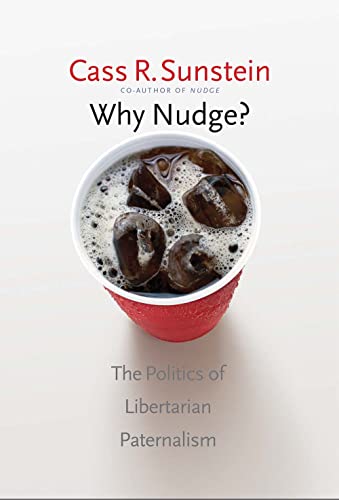The World of Sugar: How the Sweet Stuff Transformed Our Politics, Health, and Environment over 2,000 Years
Aquí teniu un resum detallat del llibre amb IA "The World of Sugar: How the Sweet Stuff Transformed Our Politics, Health, and Environment over 2,000 Years" d'Ulbe Bosma.
El llibre explora l'impacte global del sucre al llarg de dos mil anys, abastant la seva influència en la política, la salut i el medi ambient. Un dels objectius de la recerca, segons s'indica en les notes, és reequilibrar la història del sucre que sovint se centra en l'Atlàntic, incloent la producció a Àsia.
Històricament, el sucre preindustrial es classificava principalment pel seu nivell de refinament i gra. A diferència del tabac, que tenia atributs associats a la seva procedència, el sucre "entrava en aquest món sense cognom", i les botigues a Europa en temps de l'abolició el venien embolicat en papers de diferents colors per indicar la seva qualitat, mentre que altres productes es publicitaven per la seva origen, com la mostassa de Dijon o el rom de Jamaica. La història primerenca del sucre en el Mediterrani medieval inclou la seva indústria a Xipre, el Llevant, Egipte, Granada a Espanya i Sicília.
La producció de sucre a les Amèriques va estar profundament lligada a l'esclavitud. A Cuba, la liberalització del comerç d'esclaus per part de la Corona Espanyola va ser impulsada per figures com Francisco Arango y Parreño, que la veia com una manera d'alliberar el comerç de "restriccions mercantilistes". L'esclat de la revolució a la veïna Saint Domingue (Haití) el 1791 va ser vist per Arango y Parreño com una oportunitat per a Cuba, ja que Saint Domingue era el major exportador mundial de sucre, i va instar el govern espanyol a aprofitar la situació. L'influx de plantadors francesos i divuit mil esclaus que escapaven de la revolució a Saint Domingue va beneficiar la producció de sucre a Cuba, aportant coneixements sobre la construcció d'"enginyos" (molins de sucre) d'última generació. Com a resultat, les exportacions de sucre de Cuba van augmentar significativament en la dècada posterior a la revolució.
La tecnologia va tenir un paper important en l'augment de la producció. La introducció de la paila de buit per enginyers com Derosne & Cail va ser crucial. Charles Derosne, un dels fabricants, fins i tot va viatjar a Cuba el 1841 per supervisar l'adaptació del seu equipament a les condicions locals i va escriure un fulletó sobre la tecnologia, traduït per José Luis Casaseca, cap del Departament de Química de la Universitat de l'Havana i protegit d'Arango y Parreño. Aquesta innovació tecnològica va ser descrita per Casaseca com la "Revolució Industrial de Cuba". L'adopció d'aquestes pailes es va estendre ràpidament a Cuba i també va tenir lloc en altres regions productores de sucre com Java, Martinica i Louisiana. Jean-François Cail, soci de Derosne, també va construir una fàbrica de sucre de remolatxa a Ucraïna per demostrar la tecnologia.
Malgrat els avenços tecnològics, el sistema de plantació es basava principalment en el treball d'esclaus, especialment a l'Amèrica. Es calcula que una gran proporció dels africans transportats durant el tràfic transatlàntic d'esclaus estaven destinats a plantacions de sucre. A Pernambuco, Brasil, gairebé el 70% de la població esclavitzada estava directament involucrada en l'economia sucrera. A Louisiana, 139.000 dels 229.000 esclaus treballaven en plantacions de sucre; a Cuba, aproximadament 300.000; a Puerto Rico, 50.000; i a Surinam, 18.000. La persistència i el "ressorgiment" de l'esclavitud en certes regions, sovint anomenada la "Segona Esclavitud", es discuteix en el llibre.
La vida dels esclaus a les plantacions de sucre era dura. Les notes fan referència a la nutrició i l'economia domèstica dels esclaus. La resistència a l'esclavitud es va manifestar de diverses maneres.
Després de l'abolició de l'esclavitud en moltes regions, van sorgir noves formes de treball i conflicte laboral. Es va utilitzar treball contractat (indentured labor), particularment a l'Índia i altres llocs. També es va practicar el metayage (aparcera), per exemple, a les Illes de Barlovento britàniques. Les condicions laborals a les plantacions de sucre van portar a la mobilització de treballadors i vagues en diverses regions com Hawaii, Cuba, Puerto Rico, les Filipines i els Estats Units (en la indústria de la remolatxa sucrera). El llibre esmenta la pobresa, les condicions de vida i la fam en les zones de producció de sucre. Economistes com W. Arthur Lewis van estudiar el treball i el desenvolupament econòmic en les economies de plantació.
El llibre també tracta les dimensions polítiques i socials. A Brasil, figures com Karl Friedrich Philipp von Martius i Francisco Soares Franco promovien polítiques per "emblanquir" la població i marginar la població africana, veient-la com un obstacle per al progrés nacional. Els canvis en la legislació hipotecària i el finançament van ser importants en l'estructura de la indústria sucrera. La influència dels creditors i la desaparició de les "habitation-sucreries" a Guadalupe després de l'abolició són esmentades. L'ascens de grans companyies i el concepte de l'"American Sugar Kingdom" són examinats, incloent la intervenció dels Estats Units en llocs com la República Dominicana i Puerto Rico. La relació entre els grans plantadors i la burgesia a Cuba, Louisiana, Brasil i Hawaii també es descriu. Les notes també mencionen la relació entre el sucre i les identitats nacionals.
Pel que fa a la salut, a part de formar part del subtítol, les notes esmenten la connexió del sucre amb la diabetis tipus 2 i l'oposició de "grups d'interessos creats" a les mesures basades en la ciència contra el sucre. El llibre també aborda l'aparició d'edulcorants artificials com l'aspartam i l'estèvia, i la controvèrsia al voltant de la seva seguretat, involucrant figures com Donald Rumsfeld i empreses com Tate & Lyle.
L'impacte ambiental també és un tema. Les notes mencionen la depleció de combustible (fusta) a l'est del Brasil com a conseqüència de la producció de sucre.
El llibre "The World of Sugar" ofereix una perspectiva global sobre com un producte bàsic com el sucre ha modelat societats, economies i paisatges arreu del món, des de les primeres produccions fins a la indústria moderna, posant un èmfasi particular en les dures realitats del treball, sovint forçat, que ha estat històricament la seva base.
PS. Més sobre el sucre.






